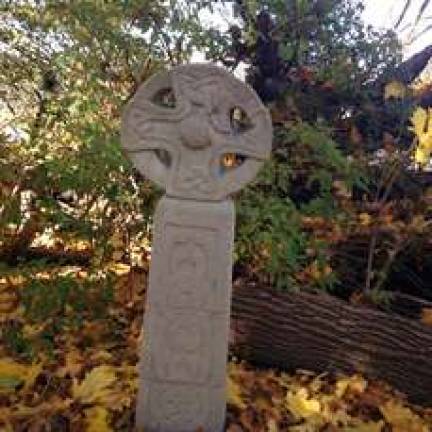Where does your god live?

A few weeks ago, I was in a discussion, sponsored by the Warwick Historical Society, about Sacred Spaces: what they are, where they are. We agreed that churches, synagogues and mosques are sacred spaces and some buildings, cemeteries and memorials might be considered sacred too. But that sacred spaces were more than buildings.
“Sacred” implies some contact with a force outside yourself, something transcendent and likely irrational. Awe and wonder are probably involved. A sacred space might be nature, certain parks, trails to overlooks and lakes, where you can experience that Aha moment. Theologian Rudolf Otto used the word numinous to talk about the sacred. It encompasses the ideas of god, spirit and divine and implies an experience that is set apart from daily life. So Sacred Spaces provoke extra-ordinary experiences. It’s likely a deep, old, primal need we have as humans. It often emerges at times of transition when our old storylines and identities are falling away. These are times of sickness, aging and confusion when we must rework the story of who we are. The story actually never stays quite the same. Similarly, sacred spaces charge and discharge for each of us.
A few questions came up. The old Kings Elementary School is now part of a church. Does that make it a Sacred Space? The old Union African Methodist Episcopal Church, a small, Gothic-style building, built in 1906 is now home to a theater company. Is it still a sacred space? What about those roadside shrines to people who died in auto accidents? That cornfield next to the Warwick Cemetery that was once part of a large indigenous Lenape settlement? That place in my backyard where we buried the beloved family cat? The sacred is something very personal, fragile and just beyond words. You know it when you feel it.
Some years ago PBS Frontline did a program called God in America (pbs.org/godinamerica/outreach/tour.html), including a how-to guide on visiting sacred spaces, from memorial sites to indigenous grounds. Find somewhere to sit, “a chair, a pew, the ground or a rock,” the guide advises. “Allow yourself to ‘just be’ in the space – even if it’s for just a few minutes.” Daniel Mack